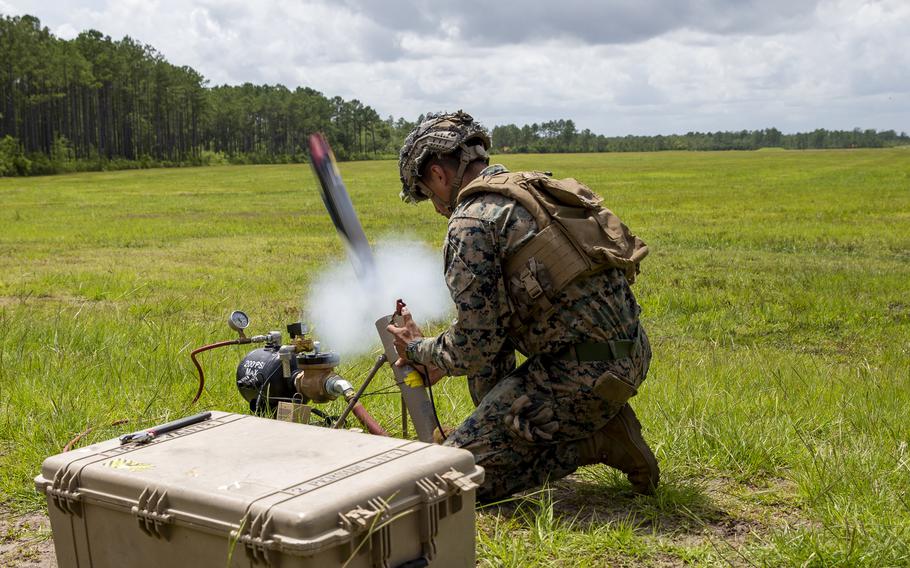
U.S. Marine Corps Lance Cpl. Isiah Enriquez, a native of Lubbock, Texas, and a rifleman with 1st Battalion, 2d Marine Regiment (1/2), 2d Marine Division (2d MARDIV), launches a Switchblade Drone during a training exercise at Camp Lejeune, N.C., July 7, 2021. 1/2 is tasked as 2d MARDIV’s experimental infantry battalion to test new gear, operating concepts and force structures. The unit’s findings will help refine infantry battalions across the Marine Corps in accordance with Force Design 2030. (Pfc. Sarah Pysher/Marine Corps)
The Pentagon plans to order and send to Ukraine 10 of the newest model Switchblade drones armed with tank-busting warheads in addition to previously announced deliveries of a less powerful version, according to two people familiar with the decision.
The new Switchblade-600 weapons are part of $300 million in lethal military assistance announced by the Pentagon Friday night that will be contracted directly from industry instead of drawn from existing stocks, according to the people, who asked not to identified discussing the plan.
Defense Secretary Lloyd Austin on Tuesday confirmed the tank-killing drones are part of the weaponry being sent to Ukraine.
The inventory of the latest round of weapons being sent to Kyiv includes “UAVs like the Switchblade UAV that is a higher level of technology but provides them additional capability to go after armor formations,” Austin said, using an acronym for unmanned aerial vehicle.
The White House said on March 16 that it was supplying 100 Switchblade drones as part of a $800 million package of weapons and gear taken from U.S. inventories. But those systems are the “series 300” versions: 3.3-pound (2.5kg) drones designed to attack personnel and light vehicles. They can fly about six miles (10 kilometers) and loiter over a target roughly 15 minutes, according to a fact sheet produced by the manufacturer, AeroVironment Inc.
The new 50-pound model, produced by the Simi Valley, California-based company can fly more than 24 miles (39 kilometers) and loiter 40 minutes before attacking with an anti-armor warhead. The drone operator uses a tablet-based touchscreen fire-control system with the option to pilot the loitering missile manually.
The early version of the dive-bombing drone has been in the arsenal of U.S. commandos since it was secretly sent to Afghanistan in 2010 for use against the Taliban. Army officials have described it as a flying shotgun.
Senior Republican lawmakers, including Representative Ken Calvert, the top Republican on the House Defense Appropriations subcommittee, have repeatedly pressed for the anti-armor model drone, including in a March 24 letter to Austin.